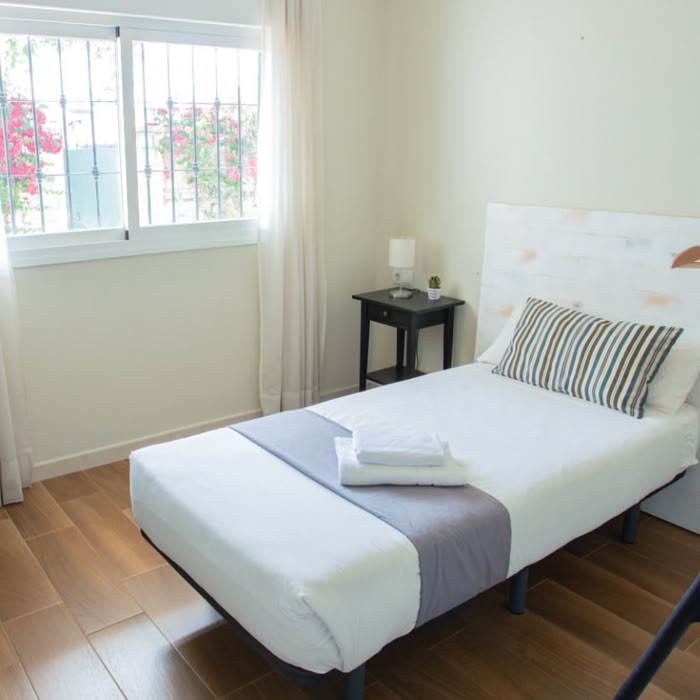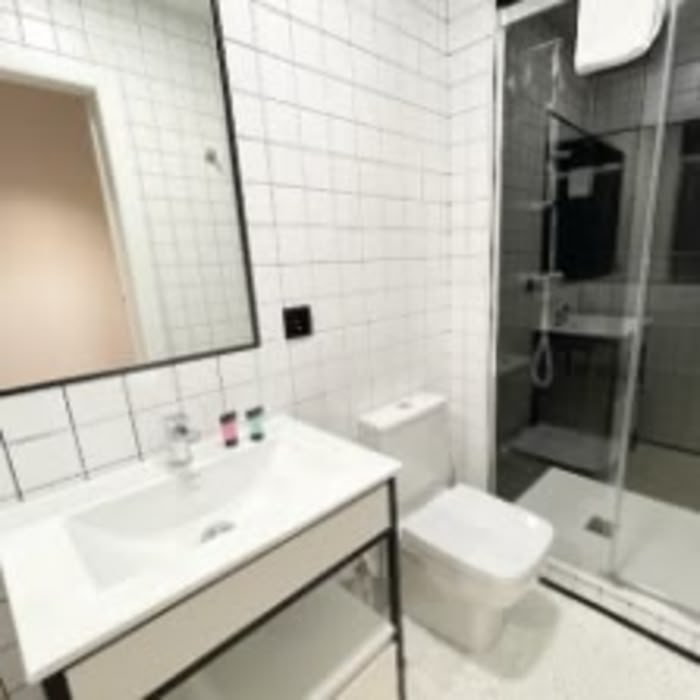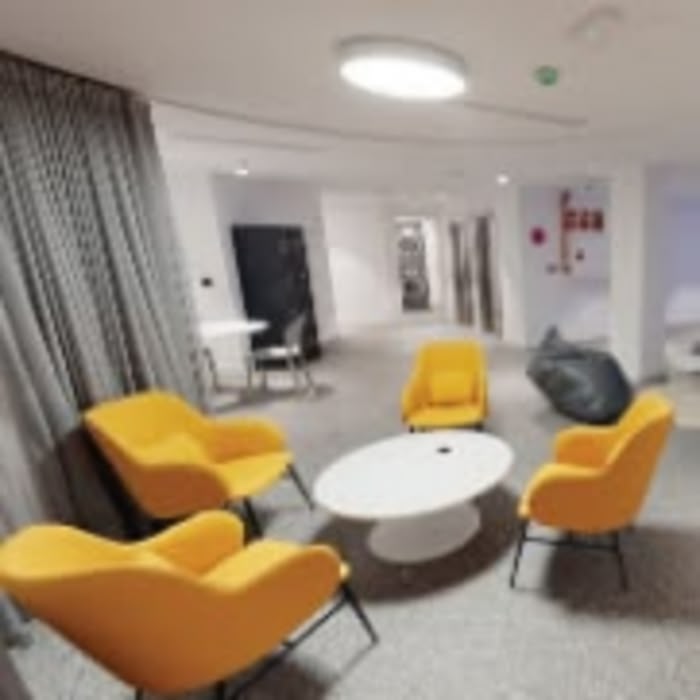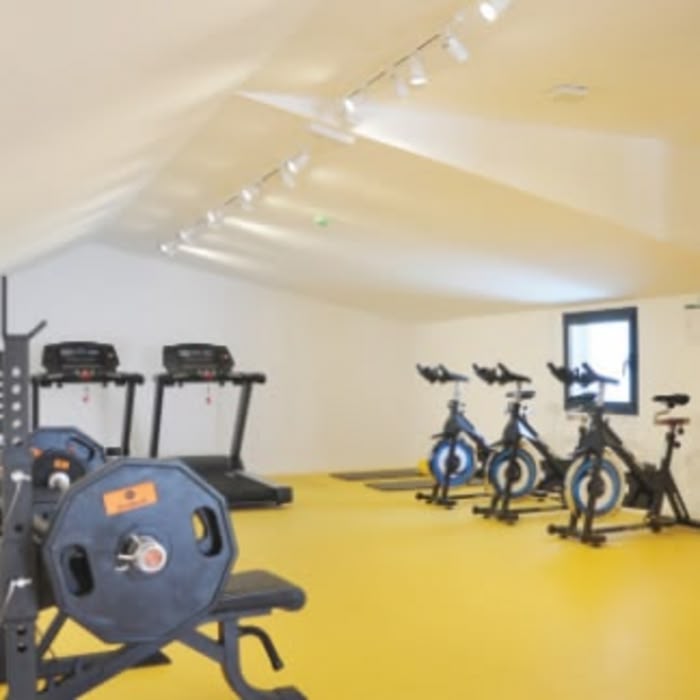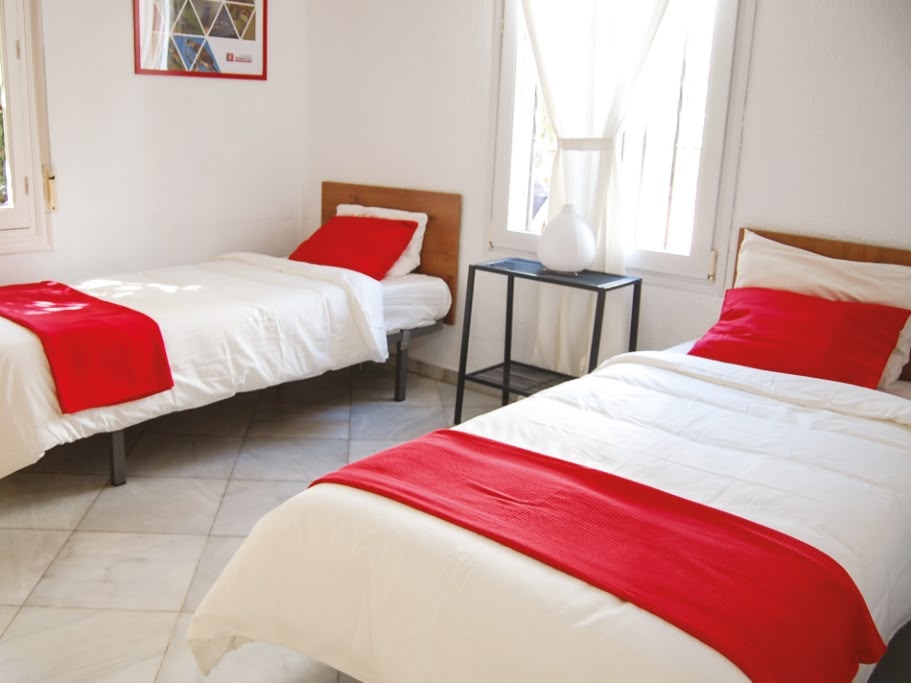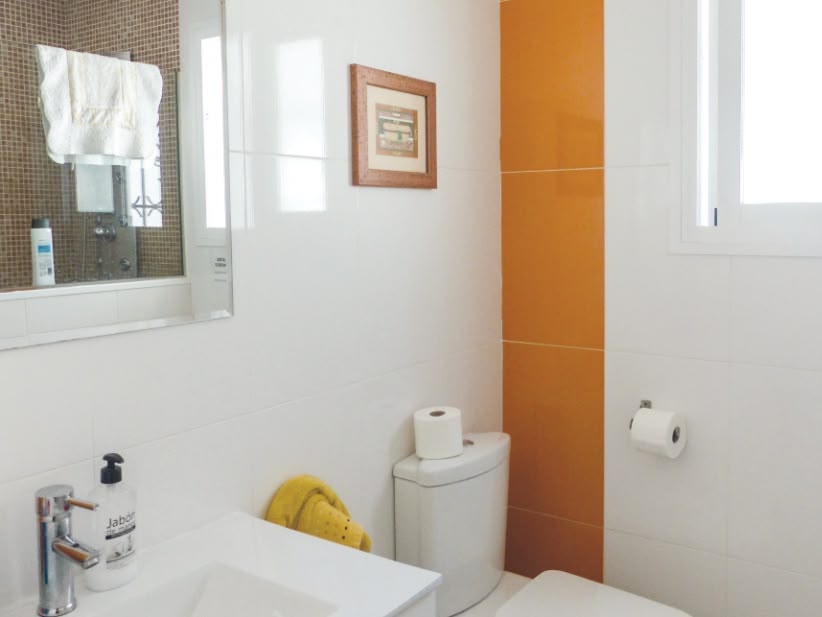Spanish Learning in Madrid
Study Spanish with Languages Abroad!
Madrid is the capital of Spain and the heart of Castillian culture, famous for it's spectacular fountains, Flameco shows, and much more. From sprawling museums to traditional restaurants and bars, around every corner you'll find a spot that draws in tourists and locals alike.
Some of Madrid's highlights include the Palacio Real, the Plaza de Espana, and the Plaza Mayor. Visitors are sure to enjoy Castillian cuisine and the Tapas tradition. Whether you're interested in history, art, food, or simply having a good time, Madrid is sure to have something for you!
- Go shopping on the Gran Via
- Try tapas in the city that invented it
- Admire the baroque grandeur of the Royal Palace

Start your adventure in Madrid with Languages Abroad today!
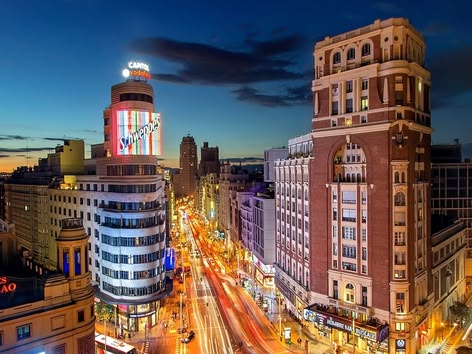
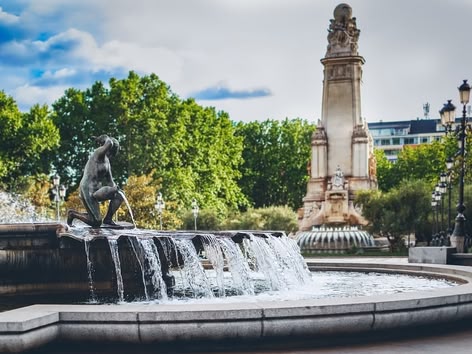
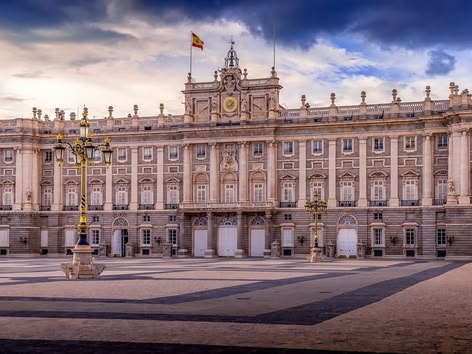
Learn Spanish
Experience exceptional Spanish language education at a centrally located school in Madrid. Benefit from expert teachers and engaging lessons, and enjoy a welcoming learning environment that provides the community spirit, individual support and practical resources needed to grow and excel. Choose from a variety of course options and begin your Spanish language journey with us today!
Madrid Spanish School
Our Spanish school is located in the heart of the city overlooking the Opera! Our very popular Madrid school could not be more centrally located, in the historical part of Madrid. The is a very fashionable and affluent quarter, only 2 minutes from the Portra Del Sol and 1 minute from the Palacio Real. Public transport ("Sol" metro station and bus station) is only a few steps away! Because of the central location, all facilities are within walking distance, including boutiques, department stores, banks, bars, etc.
Located on the 6th floor (with elevator access) of a beautiful turn-of-the-century "Historical Listed" building, our school offers great views across the rooftops of the city, including the Opera hall. Upon arrival at the school, the first thing you will notice is the friendly school staff and the relaxed atmosphere.
The school has 8 spacious and bright class rooms which are all air-conditioned (very important for those hot summers in Madrid) with 2 large outdoor terraces both offering great views over the city, perfect for relaxing between or after classes.
The school is a member of the (AEEEM) "National Association of Spanish Language Schools" and has cooperation programs with several universities.
- 7 spacious and bright class rooms (with AC)
- Terraces
- Student Lounge
- Internet
Madrid Spanish Courses
All of our teachers are friendly, experienced, and qualified. Your classes will help enhance your speaking, listening, grammar, and general comprehension skills. Teachers often facilitate classroom discussions by using role-playing and games, and our teachers also incorporate current events and cultural materials into the curriculum to help make classes more interesting and relatable.
- Open to all language levels, A0-B2
- Placement test on the first Monday morning of class
- Minimum age 16
- Flexible course length (1 week minimum)
- Classes held Monday to Friday
- Language Certificate provided at end of course
- DELE Exam Preparation Course available (Duration: 8 weeks): Start Dates: Mar 31, May 18, Sep 29. Exam Dates: May 23, Jul 17, Nov 21 (exam fees not included). Max. 10 students per class
- Receive transferable credits for your course:
Undergraduate Credit Through Brookhaven College
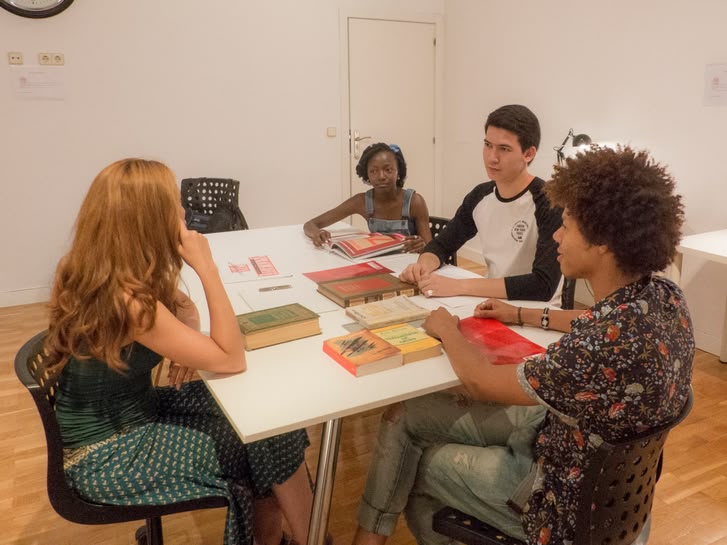
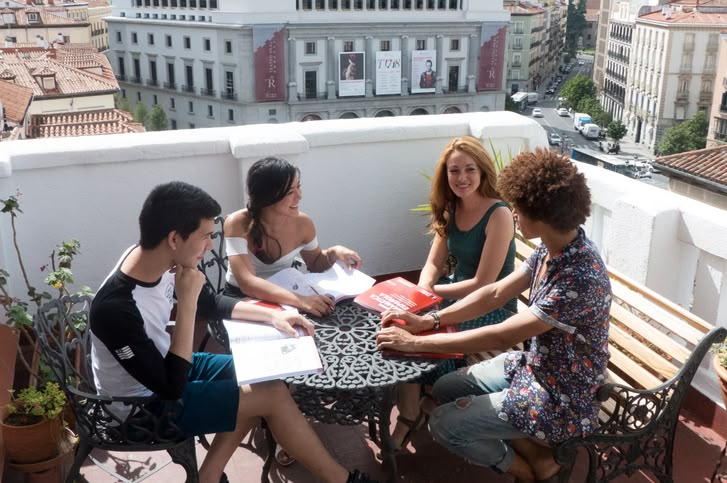
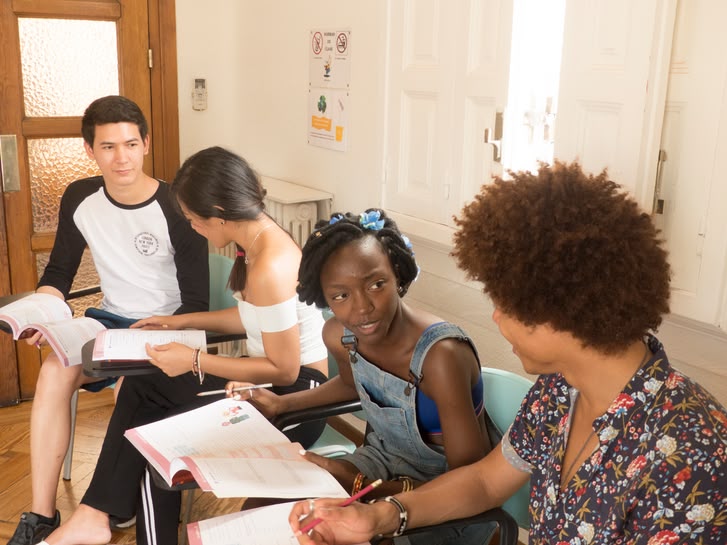
Standard Spanish Classes:
- 20 group lessons per week (4 lessons daily)
- Maximum 10 students per class
Intensive Spanish Classes:
- 30 group lessons per week (6 lessons daily)
- Maximum 10 students per class
Private Spanish Classes:
- 10, 20 or 30 group lessons per week (2, 4 or 6 lessons daily)
- 1 student per class
Spanish Youth Immersion Camp
- Only for younger students aged 12-21, with daily activities and weekly excursions.
- Standard: 20 group lessons per week (4 lessons daily, 45mins each)
- Intensive: PLUS 4 private lessons per week
- max. 15 students per class
- For general concerns about our youth program, contact us.
Live & Learn Spanish
- Study and live in the home of your own personal teacher.
- Flexible hours - 15, 20, 25 or 30 private lessons per week.
- 1 student per class
- To find out more about this homestay pathway, contact us.
Accommodation in Madrid
Welcome to your home away from home in Madrid! Choose from comfortable university accommodations or stay with a welcoming host family in this lively and diverse city. Whether you prefer the convenience of living on campus or the enriching experience of a homestay, we ensure a safe, enjoyable, and immersive stay to complement your language learning journey.
Self-Catering Apartment
Facilities
Apartments are located about 20-30 minutes from the school and are shared with other students.
Apartments are co-ed, however, bedrooms are same-gender.
The apartments include a well-equipped kitchen, shared bathroom and living areas.
They vary in location, size and number of bedrooms, but expect to share with 2 - 4 other students.
Both basic and comfort apartments are available.
Room Options
- Single room (SR)
- Double room (DR)
- Self-catering
Studio Apartment
Facilities
These private studio apartments are located about 15-20 minutes away from the school.
They are large and comfortable and have a bedroom, a kitchenette and a bathroom.
Double rooms can only be booked for two students travelling together.
Room Options
- Single room (SR)
- Double room (DR)
- Self-catering
Host Family Accommodation
Living with a local host family is the best way to immerse yourself fully in the language and culture. All our families are carefully selected and regularly visited to ensure high-quality standards. We choose only those with a genuine interest in international exchange.
All meals included within the homestay - you can also help out and learn the local cuisine first-hand in the process!
Our host families are spread throughout the region and are offered on a first-come, first-served basis, so book early to get the best locations!
Find general information here about staying with a host family. If you have any specific queries, please don't hesitate to contact our team!

After Class Activities in Madrid
Our program allows you plenty of time to discover your new country, culture, traditions, and everyday life after your class is over. Join the locals to munch on tapas and postpone dinner until 11:00 p.m. Then follow the crowds to a wonderful play at Plaza Santa Ana, shake to the dance scene of La Latinaor or take in a show at Madrid s top flamenco clubs near Plaza Tirso de Molina. Wandering through the throng at the city's flea market El Rastro is an interesting way to experience some of the city's essence and shouldn't be missed.
Main Square
Once the location of an exotic marketplace (Plaza Mayor), where Arab merchants came to sell their wares, this beautifully proportioned, cobbled courtyard was begun by Philip II and completed by Philip III in 1619 - his statue stands proudly in the middle. The plaza was intended to serve as a marketplace and showplace - heretics were burned at the stake, saints canonised and bread was sold. Today, tourists outnumber the locals but the Plaza Mayor is still lively as it was in the past. Nearby Plaza Mayor, a locale that transitions into the Hapsburg section, offers more shops, restaurants and outdoor cafés. The streets that spill down from the Plaza's Arco de Cuchilleros constitute one of Madrid s busiest dining neighborhoods.
Retro Park
This lush 118-hectare (292-acre) park, Parque del Buen Retiro, in the heart of Madrid was formerly the private garden of Philip IV. Visitors can enjoy a stroll among the trees and rose garden, a boat ride on the lake near the towering 1902 monument to Alfonso XII, tarot readings from hovering fortune-tellers or a game of chess.
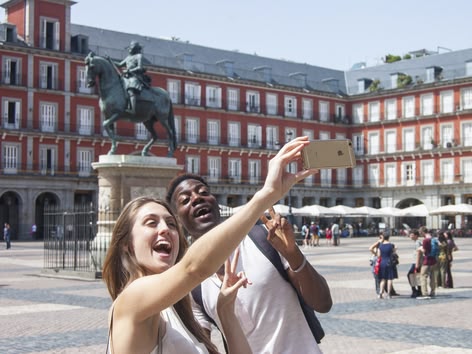
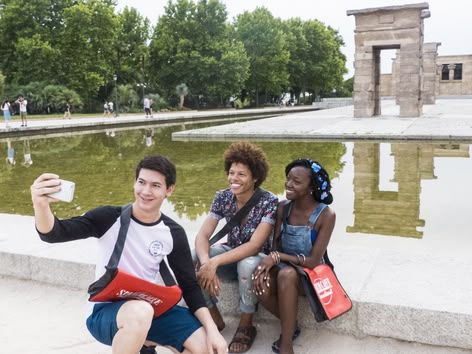
Gate of the Sun
The Gate of the Sun (Puerta del Sol) is Madrid s oldest surviving neighbourhood. Even today, much of the city (including the subway system) radiates from Sol, which is packed with shops, bars, restaurants and hotels.
In this neighbourhood, you'll also find the monument of the bear and strawberry tree (El Oso y El Madroño) which symbolises Madrid.
Bourbon Madrid
This district could almost be called "Museum Madrid" - here you'll delight in Spain's leading art institutions - the treasure-filled Prado (one of the world s top art museums), the Reina Sofia (which houses Picasso's Guernica), and the Thyssen-Bornemisza (offering two halls devoted to Impressionists and post-Impressionists).
The 3 museums are within a few blocks of each other along broad boulevards punctuated with monumental fountains and formal parks.
Dates & Prices
Start your Spanish language journey!
Madrid is the capitol of Spain and as such you'll find numerous monuments, museums, galleries and much more dedicated to the history of this country and its people. Of course, it would help to know some Spanish as well so you're able to really immerse yourself in all of it!
With Languages Abroad, you can experience all that Madrid has to offer with our Spanish languages courses and programs as well as numerous activities and excursions around the city while gaining full language immersion .
Checklist
Registration Fee: $200
Accommodation Placement Fee: $200
Airport Transfer: $150 per way (Optional)
Insurance: $30/week
Notes
The school will be closed on all public holidays.
All enrollments require a non-refundable $400 deposit to ensure space in our program.
Contact us
We're here to help you on your Spanish language learning journey!
Questions about our courses? Need assistance with enrollment? Interested in finding out more about our programs?
Our friendly team is more than willing to assist you.
Contact us by clicking the link below and filling out our contact form.
We promise a prompt and helpful response to all your inquiries.

